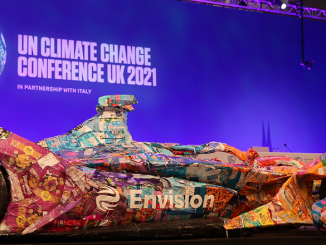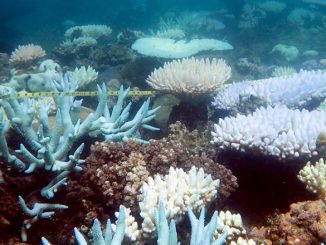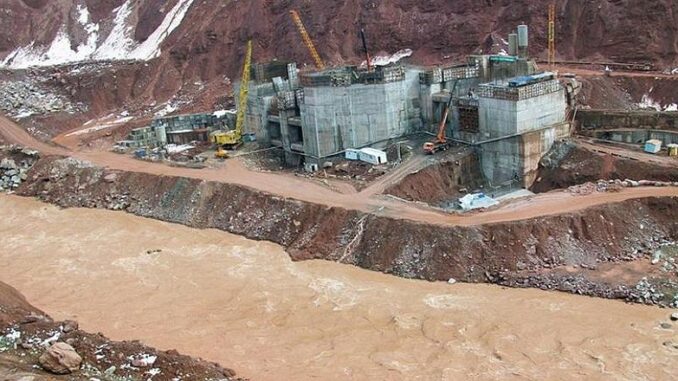
OAKLAND, California, March 15, 2024 (ENS) – Monday was the 27th International Day of Action for Rivers, a day when all across the world rivers were cleaned, dams were protested, webinars and classes were taught, adventures were had, and ecosystems were protected by people across six continents with at least one thing in common – a shared love for the world’s rivers.
The focus of this year’s International Day of Action for Rivers is #WaterForAll.
The organizing NGO, International Rivers of Oakland, California, has registered 80+ events in 35 countries as shown on its Global Map of Action, with events in North and South America, Europe, Asia, Africa and Australia demonstrating the strength of working together to protect all rivers.
Whether a community is tackling water rights, clean water access, fighting against dams, water grabs, and water privatization or removing dams and restoring rivers and fish migration, we know “water is life and is meant for all,” the group says.
“Civilizations grew up around rivers, and they are central to our lives and the survival of life on Earth. Although freshwater ecosystems are so important, they are the most threatened in the world,” International Rivers explains on its website. Freshwater species have seen an 83 percent decline since 1970 – twice the rate experienced by terrestrial or marine life. “They need our help, they need our voices. Speak out, defend, protect, restore, and be a river guardian.”
The NGO says all levels of action are welcomed, no matter how big or small. “No matter where we are, our fight is one and the same: Water is for all!” International Rivers says.
Advocates Ask Banks to Withhold Funding
To mark the day, International Rivers and other civil society groups such as Rivers without Boundaries, which protects transnational rivers; and Coalition for Human Rights in Development, sent an appeal to the World Bank and 15 other financiers, not to invest further in Tajikistan’s Rogun Hydropower Project on the Vakhsh River. If completed it would be the world’s highest and tallest dam.
Located in the upper reaches of the Vakhsh River in the Pamir Mountains, Rogun hydropower dam is about 90 kilometres (60 miles) from Dushanbe, the capital of Tajikistan.
Tajikistan has already spent US$3.3 billion on the dam, and on November 16, 2018 Tajikistan’s President Emomali Rahmon switched on the first of the power plant’s planned six turbines. A second turbine came online in September 2019.
Tajikistan’s Parliament in February 2020 passed legislation allowing foreign companies to invest in building the giant Rogun hydroelectric plant.
In July 2022, Webuild Chief Executive Pietro Salini joined President Rahmon at a ceremony to mark the commencement of the concrete pour for construction of the core dam.
But the Tajikistan government lacks at least US$6.1 billion to finish building the dam. During the last decade, projected costs of Rogun Dam completion have increased by 15 percent annually.
Once completed, the hydropower plant will have six turbines of 600 MW each with a total installed capacity of 3,780 MW – the equivalent of at least three nuclear power plants.
The finished dam is expected to measure 335-meters high, containing a reservoir of 13.3 cubic kilometers. Its expected average annual generation is estimated at 14,400 gigawatt hours, about 70 percent of current total generation in Tajikistan or seven percent of the total for Central Asia, according to a World Bank project appraisal last October.
Commissioned by the Rogun Hydropower Project, the rockfill dam with a loam core will be the tallest dam in the world at 335 metres (1,099 feet). It’s being built by Webuild, formerly known as Salini Impregilo, an Italian industrial group specializing in construction and civil engineering.
An agreement between Webuild and OJSC Rogun Hydropower Project, the state-run engineering company coordinating the project, governs the exploitation of the Rogun River’s enormous hydroelectric potential.
The new dam is expected to make Tajikistan energy rich, doubling energy production in the country and helping reduce winter power shortages. But more than 7,000 people have been displaced so far, and it is estimated that 38,000 more people, too, will have to be resettled
Designs for the Rogun Dam date back to the 1960s, when Soviet planners proposed three massive hydroelectric projects on the Vakhsh River, a major tributary to the Amu Darya River.
But construction on the project stopped in the early 1990s following the end of the Soviet Union.
Plans for Russia to provide funding for the project unraveled as the Tajik government opted to diversify the ownership of its hydroelectric industry and move away from the Russian investment,” explains Alexander Botting, senior director, global security and technology strategy with the Washington, DC-based law firm, Venable, in a 2013 article for the “Diplomatic Courier” titled Rogun Dam: The Waiting Game.
While the dam does have two turbines operating, the waiting game continues. Currently, construction at the Rogun dam is on hold while a series of World Bank-funded studies are underway into Rogun’s potential ecological, environmental and socio-political impact on the entire region.
The project has raised tensions with neighboring Uzbekistan over a decrease in the downstream water flow needed for its irrigated cotton crops.
Still, in July 2018 Uzbekistan dropped its opposition to the Rogun Dam. “Go ahead and build it, but we hold to certain guarantees in accordance with these conventions that have been signed by you,” then Uzbek Foreign Minister Abdulaziz Komilov said in a televised appearance.
Unique Riverbank Forests at Risk
But there are other environmental worries surrounding the Rogun Dam. Precious ecosystems, including the new UNESCO World Heritage site known as Tugay Forests of the Tigrovaya Balka, risk being heavily impacted.
Tugay is a form of riverbank forest or woodland associated with fluvial and floodplain areas in arid climates. These wetlands are subject to periodic inundation, and they are dependent on floods and groundwater rather than rainfall.
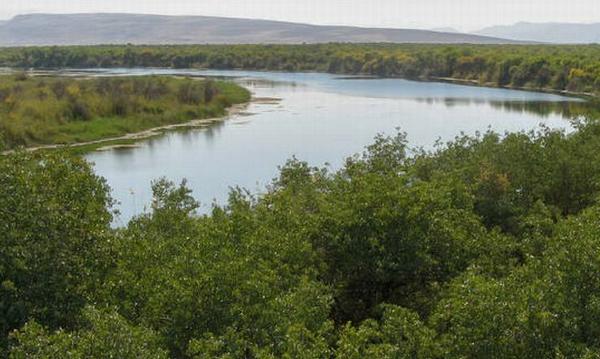
In September 2023, the Tugay forests of the Tigrovaya Balka Nature Reserve in the Vakhsh River valley were inscribed on the UNESCO World Heritage List, but they are still at risk if the dam is completed.
In UNESCO’s description of the Tugay Forests property, worry about the dam’s effects shows, especially because the Vakhsh River is already modified by eight dams.
“These dams change inter-seasonal and inter-annual flow dynamics reducing the flooding on which riparian tugay ecosystems depend. Only the section along the Panj river is still under some influence of natural riparian dynamics but their riparian woodlands are of limited size. The water balance is now partly supported by secondary water sources from irrigation systems. The water regime within the property has been restored to the extent that the property’s integrity is ensured, but the matter requires constant attention and action,” UNESCO explained.
Biologist and ornithologist Rustam Muratov, who heads the Department of Terrestrial Vertebrates at the E.N. Pavlovsky Institute of Zoology and Parasitology in Dushanbe, said, “The Tigrovaya Balka Nature Reserve is the last large reserve on the planet that is home to the unique tugay flora and fauna.”
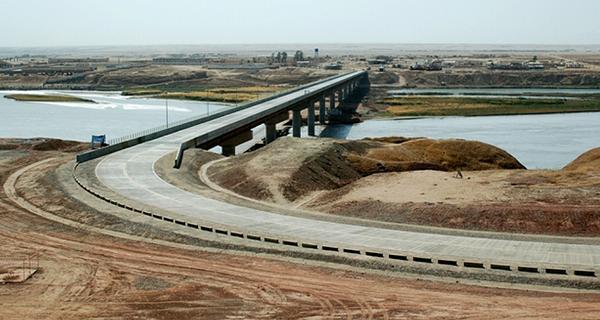
The campaigners warn that building this dam on the Vakhsh would impact these connected rivers and water basins, with affecting ecosystems and agriculture. As the rivers’ flow to the Aral Sea will be severely reduced by the dam, the neighboring countries downstream – Afghanistan, Turkmenistan and Uzbekistan – are likely to experience water scarcity.
The Tugay Forests of the Tigrovaya Balka Nature Reserve is located in the interfluve of the Vakhsh and Panj rivers in southwestern Tajikistan at the border of Afghanistan. The confluence continues to the largest river in Central Asia, running to the Aral Sea, called the Amu Darya, which gets 40 percent of its water from the Vakhsh River.
Yet the concerns of the affected communities remain unheard. According to CIVICUS, a global alliance based in Johannesburg, South Africa, the space for civil society in Tajikistan to influence these decisions is “closed” as human rights defenders and journalists are routinely imprisoned and attacked.
Most people live in a climate of fear and they would not even dare to raise their concerns and openly oppose a project such as the Rogun Dam, CIVICUS says.
Rogun Dam Investments Still Rolling In
Despite the concerns around the project and the rising costs, Rogun is still attracting investments from all over the world – Europe, China and Iran – as Tajikistan is at the crossroads of major geopolitical interests.
Bordering Afghanistan and China, in the past decades it was mainly under the Russian sphere of interest. But recently, Europe has also been seeking to expand its influence there, to reduce the Central Asian countries’ dependence on Russia and to counter China’s Belt and Road Initiative.
If the Rogun Dam is completed, Tajikistan, as the largest supplier of relatively cheap and environmentally friendly electricity, will be able to increase its influence in the region, finds the Central Asian Bureau for Analytical Reporting.
Some of the major international financial institutions – World Bank (WB), European Investment Bank (EIB), European Bank for Reconstruction and Development (EBRD), Islamic Development Bank (IDB), Eurasian Development Bank (EDB), the Asian Infrastructure Investment Bank (AIIB) – are getting involved in the Rogun sustainable finance plan orchestrated by the World Bank. Other development banks such as the Asian Development Bank, are financing associated transmission lines and roads.
Most of these banks, in their safeguards, are committed to comply with environmental and social safeguards. Yet, to push forward with this project, environmental advocates say they are “ignoring their own policies and disregarding the concerns raised for years by international and regional organizations.”
The river advocates point out that Tajikistan is already under huge fiscal pressure, citing information from the International Monetary Fund. Financing the Rogun Dam, they say, “…will push the level of debt far beyond sustainable levels and exacerbate fiscal health problems, especially considering the increasing project costs and delays. The construction of this mega-dam will also force the government to reduce spending on essential services, such as health, education, social welfare and other infrastructures.”
Finally, the river protectors argue, “According to EU standards, with expected emissions of more than 102g CO2 e/KWH, the Rogun project does not meet the criteria for a ‘substantial contribution’ to climate change mitigation.”
“Nor will Rogun hydropower contribute to the decarbonisation of the Tajik energy system, which has a similar emission intensity. … If Uzbekistan and Kazakhstan decide to rely on energy imports from this source, the project could delay Central Asia’s green transition by 15 years,” the advocacy groups told the multilateral development banks in their International Day of Action for Rivers letter. “Alternative renewable schemes could be built five times faster and three times cheaper than the giant Rogun Dam.”
Featured image: The Rogun Hydropower Plant under construction on the Vakhsh River in the Pamir Mountains of Tajikistan, 2019. (Photo courtesy Cabar Asia)
© 2024, Environment News Service. All rights reserved. Content may be quoted only with proper attribution and a direct link to the original article. Full reproduction is prohibited.


